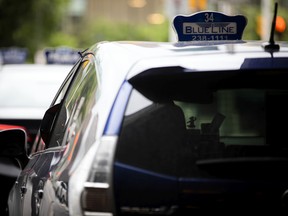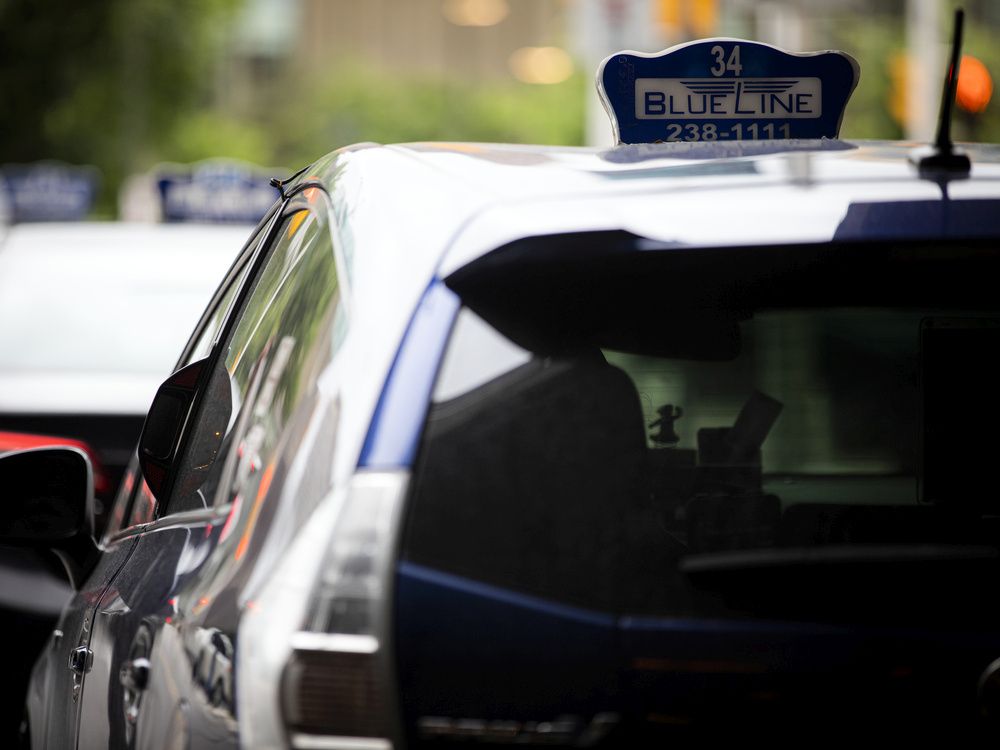Breadcrumb Trail links
“I have seen gas prices go up, up, up, so my cars have gone down, down in size.”
 Last week, taxi rates went up 10 per cent in the City of Ottawa — the first fare increase in 12 years — in recognition of the extraordinary burden of rising gas prices. Photo by Ashley Fraser /Postmedia
Last week, taxi rates went up 10 per cent in the City of Ottawa — the first fare increase in 12 years — in recognition of the extraordinary burden of rising gas prices. Photo by Ashley Fraser /Postmedia
Article content
Ever since he began to drive a taxi in Ottawa, Amrinder Malhi’s life behind the wheel has been buffeted by global forces: First came the Uber invasion, then the COVID-19 pandemic and, now, sky-high gas prices.
Advertisement 2
This advertisement has not been loaded yet, but your article continues below.
Article content
Earlier this year, Malhi said, he used to put about $35 of gas into his taxi during a typical shift, but now it’s more like $60: money that comes out of his pocket since drivers pay their own fuel costs.
Last week, taxi rates went up 10 per cent in the City of Ottawa — the first fare increase in 12 years — in recognition of the extraordinary burden of rising gas prices.
Most gas stations in Ottawa were charging just over $2 a liter Saturday. The price of gasoline has jumped more than 20 per cent since February because of increased demand alongside supply disruptions caused by the pandemic and the war in Ukraine.
Malhi says the new meter rates ease a bit of the pain. Customers, he said, have been sympathetic.
“People know what the gas price are, what we’re paying. People understand, actually,” said Malhi, who began driving a taxi after immigrating to Canada from India’s Punjab region. He drives 12 to 14 hours a day to make ends meet and to support his wife and two children.
Advertisement 3
This advertisement has not been loaded yet, but your article continues below.
Article content
 Amrinder Malhi says the new meter rates approved recently by the city ease a bit of the pain of higher fuel costs. Customers, he added, have been sympathetic. Photo by Ashley Fraser /Postmedia
Amrinder Malhi says the new meter rates approved recently by the city ease a bit of the pain of higher fuel costs. Customers, he added, have been sympathetic. Photo by Ashley Fraser /Postmedia
“For the last two and a half years, I was at home during the pandemic,” he said. “So I’m glad to be working again, even with gas prices. Now, business is better. I think it’s improving.”
Blue Line driver Gursewak Singh Malhi said the new meter rates did not compensate drivers for all of the money they’d lost to rising gas prices, a problem compounded by higher insurance premiums and more expensive sticker prices on new cars.
“Every bit helps,” he said.
He now drives a Toyota Prius hybrid in an attempt to reduce his overhead costs. The hybrid replaced a four-cylinder vehicle, which replaced a six-cylinder car, which replaced an eight-cylinder.
“I have seen gas prices go up, up, up,” said Malhi, who has been driving professionally for more than 20 years, “so my cars have gone down, down in size. We need a big trunk, lots of room for our customers, but still we need an economical car.”
Advertisement 4
This advertisement has not been loaded yet, but your article continues below.
Article content
Taxi driver Joseph Keyourz works eight to 10 hours a day, seven days a week, in order to earn a living. He fills his Honda Civic up every two days for about $80.
“It has been hard for us since 2020 and the pandemic, but now, with the gas prices, it’s crazy,” he said.
The pandemic has been particularly hard on drivers in Ottawa, Keyourz said, since it’s a government town and many civil servants continue to work from home.
“It’s a ghost town in pandemic times,” he said. “People are coming back to the city, but, with the gas prices, nothing is easy.”
 Veteran taxi driver Gursewak Singh Malhi now drives a Toyota Prius hybrid in an attempt to reduce his overhead costs. The hybrid replaced a four-cylinder vehicle, which replaced a six-cylinder car, which replaced an eight-cylinder. Photo by Ashley Fraser /Postmedia
Veteran taxi driver Gursewak Singh Malhi now drives a Toyota Prius hybrid in an attempt to reduce his overhead costs. The hybrid replaced a four-cylinder vehicle, which replaced a six-cylinder car, which replaced an eight-cylinder. Photo by Ashley Fraser /Postmedia
In March, rideshare services such as Uber also introduced gas price surcharges for rides. Uber is maintaining a 50-cent surcharge on every ride to help its drivers offset fuel costs.
Advertisement 5
This advertisement has not been loaded yet, but your article continues below.
Article content
The temporary fee is designed to reduce the burden of high gas prices, not to fully cover the cost, Liza Winship, Uber’s head of driver operations, said in a news release. Winship said Uber was also trying to help drivers switch to electric vehicles by providing incentives of up to $4,000 annually and by negotiating special discounts on the purchase price of the vehicles.
In February, Ottawa’s largest taxi firm, Coventry Connections, and its largest taxi union, Unifor Local 1688, sent a joint letter to the city requesting a fare increase.
Union president Amrik Singh told the city’s community and protective services committee that current economic conditions made it “very, very very difficult” to operate a cab in Ottawa. “Gas is more expensive, insurance is expensive, cars are more expensive,” he told committee members.
Under the new taxi rates approved by city council, the cost of a 10-kilometre taxi ride is now $24.42, up from $21.78.
Share this article on your social network
Advertisement 1
This advertisement has not been loaded yet, but your article continues below.
By clicking on the sign up button you consent to receive the above newsletter from Postmedia Network Inc. You may unsubscribe any time by clicking on the unsubscribe link at the bottom of our emails. Postmedia Network Inc | 365 Bloor Street East, Toronto, Ontario, M4W 3L4 | 416-383-2300
Thanks for signing up!
Comments
Postmedia is committed to maintaining a lively but civil forum for discussion and encouraging all readers to share their views on our articles. Comments may take up to an hour for moderation before appearing on the site. We ask you to keep your comments relevant and respectful. We have enabled email notifications—you will now receive an email if you receive a reply to your comment, there is an update to a comment thread you follow or if a user you follow comments. Visit our Community Guidelines for more information and details on how to adjust your email settings.

